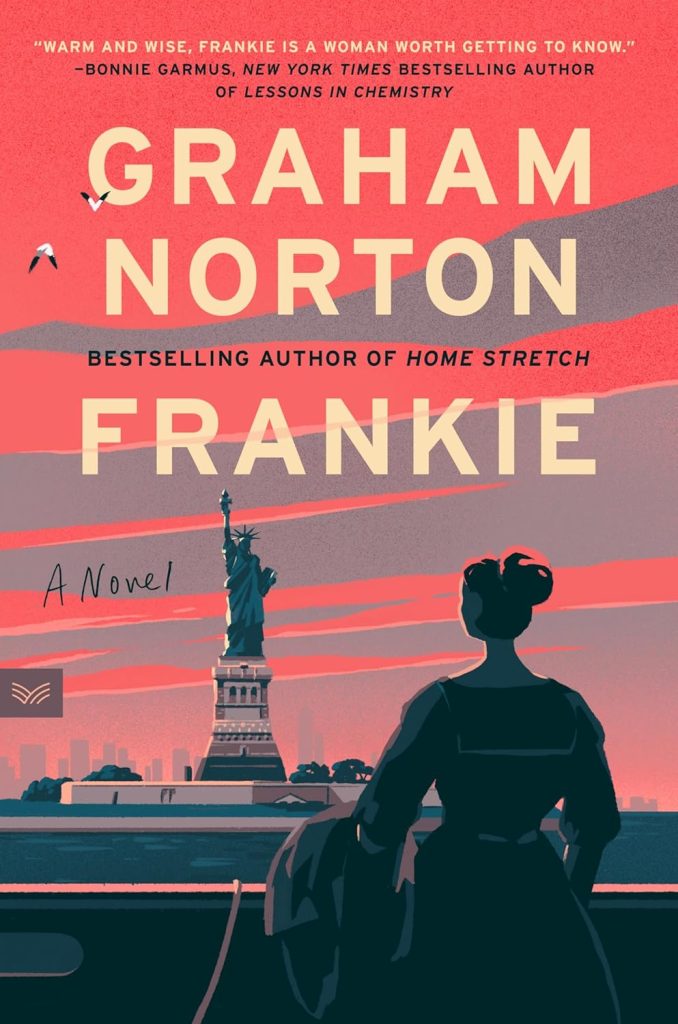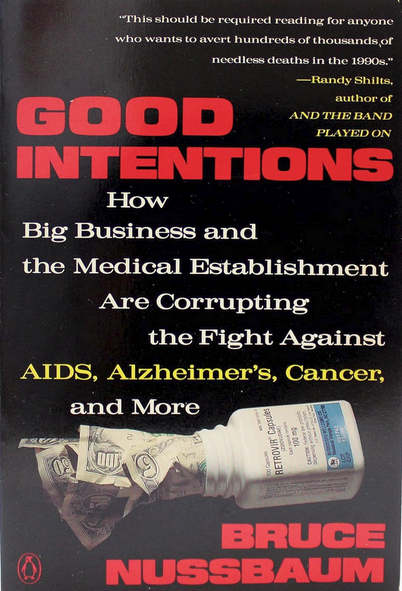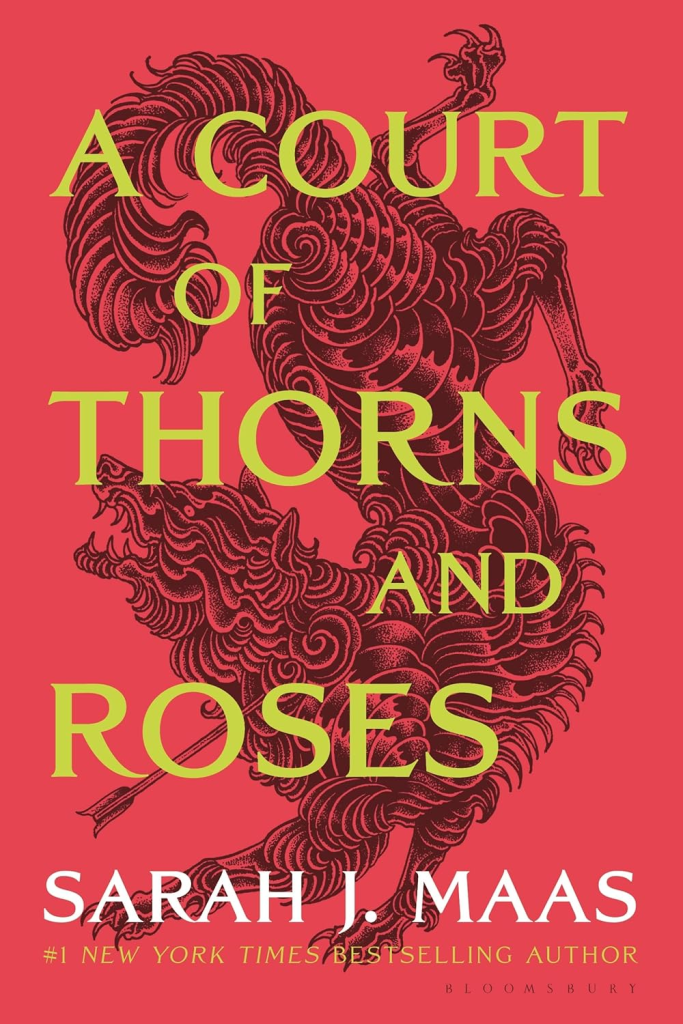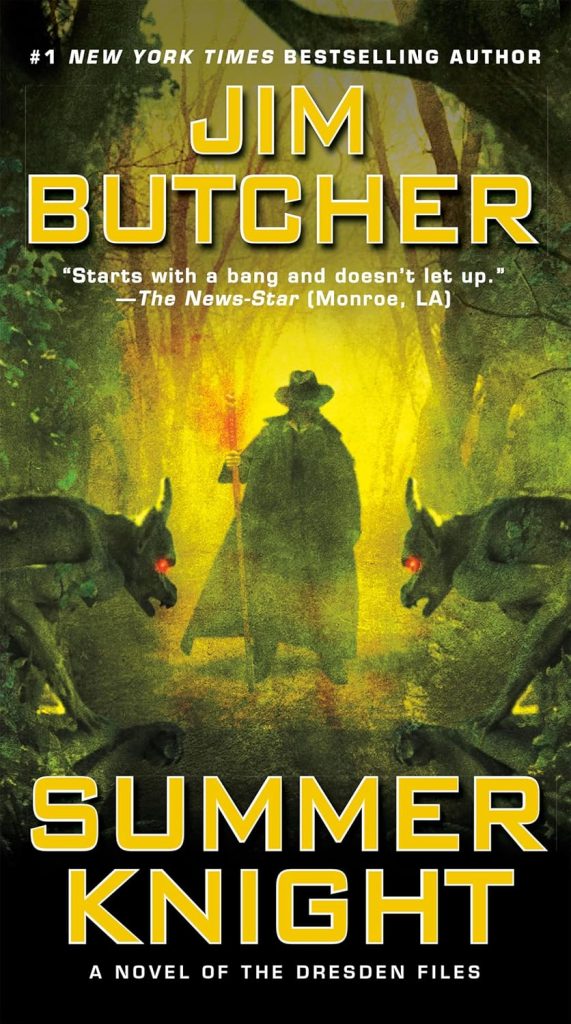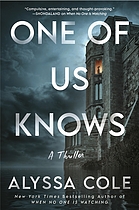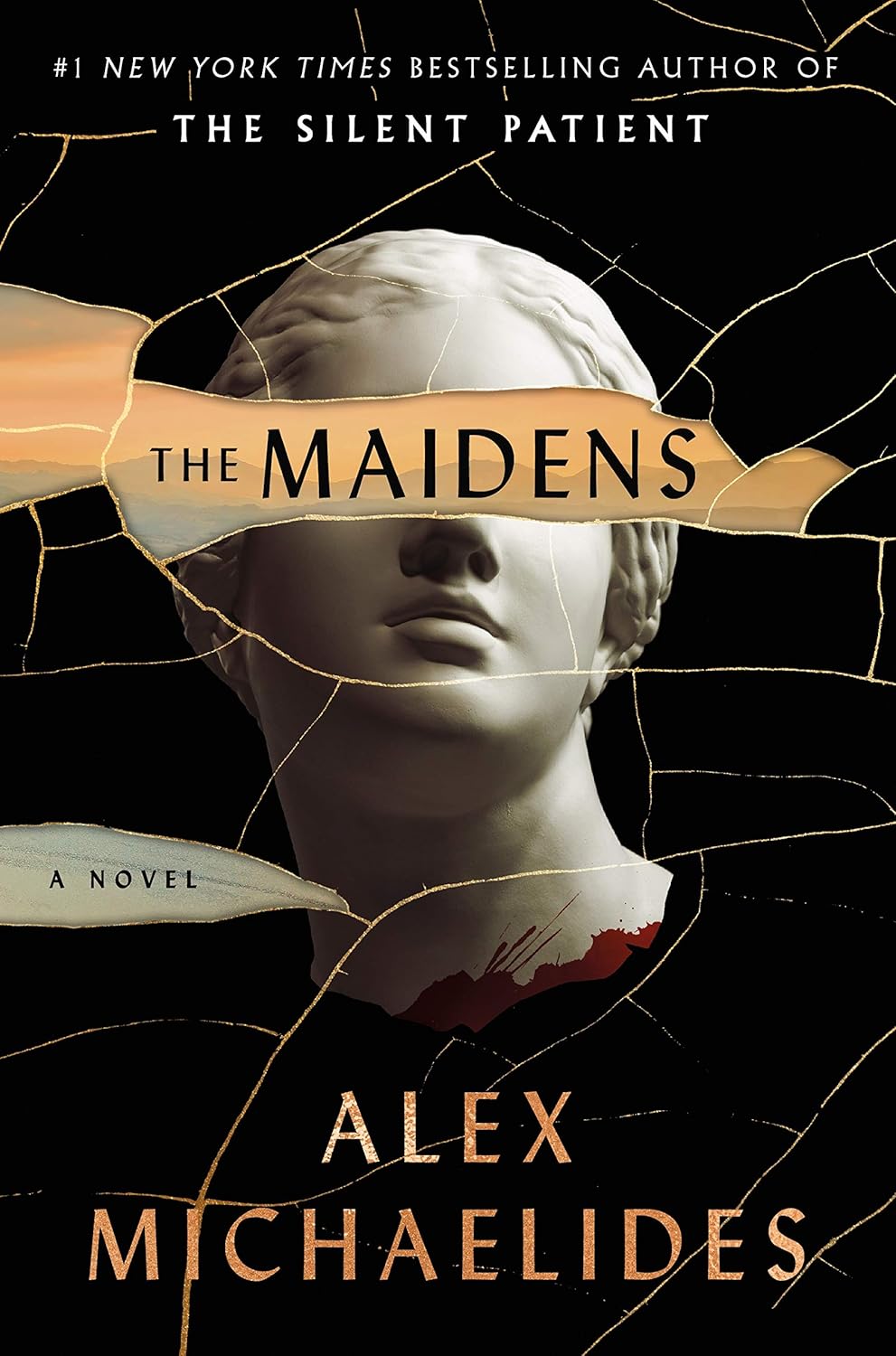Search the Blog
Categories
- Books & Reading
- Broadband Buzz
- Census
- Education & Training
- Friday Reads
- General
- Grants
- Information Resources
- Library Management
- Nebraska Center for the Book
- Nebraska Libraries on the Web
- Nebraska Memories
- Now hiring @ your library
- Preservation
- Pretty Sweet Tech
- Programming
- Public Library Boards of Trustees
- Public Relations
- Talking Book & Braille Service (TBBS)
- Technology
- Uncategorized
- What's Up Doc / Govdocs
- Youth Services
Archives
Subscribe
Tag Archives: Friday Reads
Friday Reads & BookFace Friday: “Frankie” by Graham Norton
You’ll want to get to know this #BookFace!
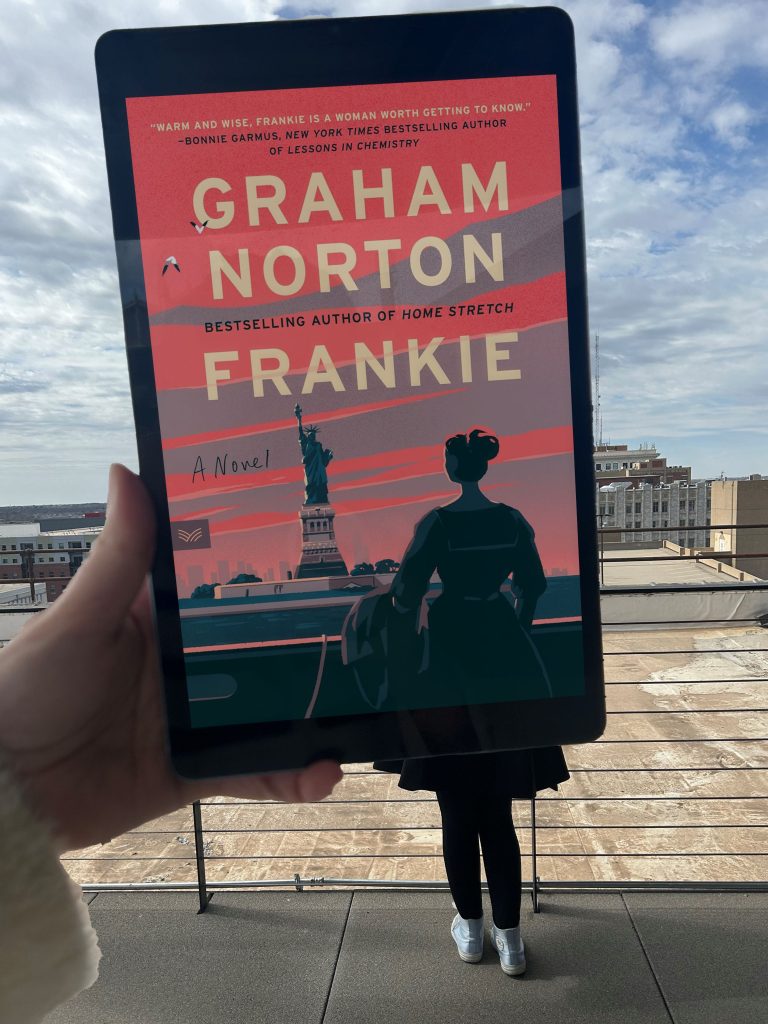
I am always interested in anything Graham Norton writes and when his fifth audio book of fiction was released with Norton’s narration, I saved it for a long weekend of listening. Graham often sets his books in Ireland but this book expands to London and New York City following the very full life of the title character from age 10 to her 80s. The story begins with Irish born Frankie recovering from an injury with the assistance of a home health care worker named Damian in her London flat. Damian is also Irish and the two enjoy an easy rapport. Frankie’s home is filled to the brim with souvenirs and boxes of memorabilia that provide easy conversation starters. As Frankie tells the stories of her past, both listeners benefit therapeutically. In one poignant moment, Frankie asks Damian if his heart has ever been broken. His answer is naive and honest, even more so given Frankie’s history. Frankie regains her mobility and Damian departs for other assignments but not until they celebrated their newfound friendship.
I found myself talking about this book to my reader friends but never did I say, this could be something they might like to read. The Irish authors I’ve read have a definite tone to their work. It’s pragmatic and practical. The characters know that if life is going smoothly, they ought to appreciate it because it will all come to an end sooner rather than later. There are moments of great passion and love in Frankie’s life, but also tragedy and heartbreak. It’s the unequal ratio toward more sadness that makes it Irish fiction in my opinion and that can be a tough sell. Even so, I will continue to read Norton’s works because he is a brilliant storyteller and narrator. This was my favorite of Graham’s novels and I missed Frankie for days after I finished the book.
Norton, Graham. Frankie. HarperVia, 2025.
Love this #BookFace or #FridayReads? Check out our past posts on the Nebraska Library Commission’s Facebook page!
Posted in Books & Reading
Tagged bookface, bookfacefriday, Frankie, Friday Reads, Graham Norton
Leave a comment
Friday Reads: “The Berry Pickers: A Novel” by Amanda Peters
This historical fiction novel set in 1960s New England follows two families whose paths cross alongside a dirt road and are then forever entwined. Joe and his family are Mi’kmaq, they travel down from Nova Scotia every year to work the berry fields of Maine. His day begins as any other but when he fails to keep an eye on his four year old sister Ruthie, he will spend the rest of his life trying to atone for her disappearance.
Norma has grown up in a sheltered and isolated suburban home with a mother that always seems afraid to let her out of her sight. She doesn’t remember much of her early childhood, but her parent’s distress when she asks about it or mentions her imaginary friend Ruthie has taught her to keep questions to herself. As she grows up her assumption that she’s adopted, and her parents never wanted to tell her will be shaken by a more awful truth. The Berry Pickers follows the aftermath of one family’s tragedy and another’s sins as both try to move forward after the loss of a child. Peter’s weaves these two dramatically different family stories together, exploring themes of family, guilt, and identity. It was the winner of the Andrew Carnegie Medal for Excellence in Fiction, and the 2024 selection for One Book One Lincoln by Lincoln City Libraries.
Peters, Amanda. The Berry Pickers: A Novel. Catapult. 2023.
Posted in Books & Reading, General
Tagged Alex Michaelides, Book Review, books, Friday Reads, Novel, Reading, The Maidens
Leave a comment
Friday Reads: At Wit’s End: Cartoonists of The New Yorker – Photographs by Alen MacWeeney Words by Michael Maslin
The New Yorker magazine celebrates its 100th anniversary this year. At Wit’s End is perfectly timed to showcase cartoonists and cartoons that have been a consistent part of the magazine since its inception. Wit’s End is a truly fun book and one that diverts from books many of us typically read. The New Yorker has provided readers with hundreds of thousands of cartoons from over 700 cartoonists that delight, capture, and depict the happenings of the time. Whether pop culture, politics, or other, The New Yorker cartoonists drill into topics of the day with skilled artwork and clever captions. With or without captions, cartoonists tell stories within the art of a single-frame cartoon.
It might be that I’ve been a decades long subscriber to The New Yorker magazine for its cartoons and covers. And that may be why I had to get a copy of At Wit’s End after reading a review. Every once in a while, it is fun to spend time with a book that amuses and fascinates. I found that in this book.
In At Wit’s End, Michael Maslin, a cartoonist himself, profiles 50 some of The New Yorker cartoonists selected from the hundreds whose cartoons have been published in the magazine over the past century. Some of the cartoonists have been contributors over many decades and some are newer and more recent magazine cartoon contributors. Ed Koren, for one, is among just a couple of dozen who have sold more than two thousand drawings. A typical reader likely knows little about the cartoonist but will readily recognize their style. That’s why it is a joy to learn about the cartoonist behind the cartoon aptly profiled by Maslin. The cartoonists are uniquely creative with atypical personalities, even eccentric perhaps.
The cartoonist profiles are complemented with Alen MacWeeney’s photographs and a sampling of single-panel cartoons depicting the cartoonist’s style. The New Yorker readers no doubt have their favorite cartoonists. Mine include George Booth, Charles Addams, William Steig, David Sipress, James Thurber, and Robert Mankoff (The New Yorker cartoon editor for over two decades), and there are many more. For the record, mentionable are a couple of well-known cartoon captions – Peter Steiner’s “On the internet, nobody knows you’re a dog” and Bob Mankoff’s “No, Thursday’s out. How about never – is never good for you?”
From 1997-2012 The New Yorker published an annual Cartoon issue. The magazine’s Cartoon Caption Contest began in the 1998 Cartoon issue and has continued as a weekly feature since 2005. The feature, near the back pages of the issue, includes the new contest cartoon, three finalists, and the winning caption.
Cartoonist Michael Maslin is a notable writer as well and whose Ink Spill Blog is “The go-to chronicle of all things New Yorker cartoon.” Photographer Alen MacWeeney is an internationally celebrated photographer whose photographs accompany cartoonist profiles in At Wit’s End.
MacWeeney, Alen, and Maslin, Michael, Alen. At Wit’s End: Cartoonists of The New Yorker. Clarkson Potter, 2024.
Friday Reads: Mastering the Art of French Eating by Ann Mah
When Ann Mah moved to Paris in 2008, she envisioned three glorious years of exploring the French cuisine. Living in Paris was a dream come true for Ann, a freelance food writer, and she had always imagined exploring it with her “favorite person,” her husband. The couple was accustomed to moving frequently, but after only a month in Paris, her husband, a foreign diplomat, was called to serve in Baghdad for a year. Ann is suddenly forced to change her expectations and explore France on her own.
Mastering the Art of French Eating: From Paris Bistros to Farmhouse Kitchens, Lessons in Food and Love focuses on Ann Mah’s first year in Paris. Each chapter is devoted to a different French dish like steak frites, crepes, soupe au pistou, and cassoulet. She also explores the history of each dish and connects with those who make them today. Recipes are included if you want to make them at home.
Her need for crepes reminded me of my Chinese mother, who can’t go more than a day without a bowl of rice, or my Italian friend Gianfranco, who requires regular infusions of pasta, or even Didier, who once told me that he missed cheese so much on a trip to South Africa that he ate an entire wheel of Camembert on the airplane home. Crepes, I realized, were a Breton’s comfort food.
The strengths of this memoir are in the exploration of French cuisine and its history, but it is also about navigating loneliness and independence, and exploring identity. Although Ann has a lot of experience traveling and living abroad, she is not comfortable doing those things alone. Her experience has always been with a parent or partner. At times I wanted to reach into the book and shake her as she wastes a lot of time wallowing in loneliness. She struggles to find her own joy, but by connecting with others, she also learns about herself.
How does a cross-cultural seesaw affect a person’s identity? Perhaps if I learned more about Alsace and its cuisine, I could better understand what might happen to me, an American of Chinese ethnicity who changed countries every three to four years.
If you want to explore more of Ann Mah’s writing, you can also check out two of her novels inspired by France in Nebraska Overdrive.
Mah, Ann. Mastering the Art of French Eating: From Paris Bistros to Farmhouse Kitchens, Lessons in Food and Love. Penguin Books, 2013.
Friday Reads: And the Band Played On/Good Intentions: How Big Business and the Medical Establishment are Corrupting the Fight Against AIDS
This week’s FR is a twofer, but they are interconnected and the only other way to do this in a non-twofer fashion would be to post about the first book today, then the second one next time I’m up (which is June 27). Forget that. First up, at 656 pages, And the Band Played On takes some commitment, but is a relatively easy read. Author (San Francisco Chronicle reporter) Randy Shilts died from AIDS related complications (Kaposi’s sarcoma and Pneumocystis pneumonia) at the age of 42 (in 1992). This book skips between the media coverage (and non-coverage) of the epidemic, the medical community’s research and response, the political response/non-response, and individual stories of those that suffered and succumbed to the horrible disease (or had friends or family that succumbed). Shilts spends time covering the discovery of what was known in the early days as “gay cancer”, the likely proliferation and spread through bathhouses, the scientific research (many ego clashes at public health institutions), community activists, and the push/pull with government research and funding. The essential discovery by French researchers was plagiarized by American scientists, taking credit for the discoveries of the French. After reading the book, which abruptly ends without much time spent on repurposed drugs and the development of new ones, I found myself disappointed in the public health system yet again, but optimistic about the rogue frontline doctors and community activists who fought the large bureaucracies. I asked, what happened next? What about the FDA, the buyer’s clubs, and what about AZT? None of that was covered much by Shilts in depth, so I reached out and found the rest of the story in Good Intentions: How Big Business and the Medical Establishment Are Corrupting the Fight Against AIDS, by Bruce Nussbaum. I had to order it on ILL and pay the $3.50 fee. It was worth it, but every library should carry these two works for narratives about the AIDS epidemic.
Nussbaum’s work is an informative continuation of the story, but no less depressing. Many of the same actors from the work of Shilts appear, but instead of the push/pull between doctors jockeying for credit to discover things in the lab, the push/pull largely takes place between federal health agencies, pharmaceutical manufacturers, frontline doctors, and community organizations (notably ACT-Up). This clash of egos and scientific ineptitude led to many more needless deaths and suffering. One of the main villains is the NIAID, headed by Tony Fauci, who quickly proved his agency was in way over their head. NIAID took over from the National Cancer Institute (NCI), because AIDS is obviously an infectious disease, and it was hard for the NCI to argue that point. The problem was that NIAID had never been involved with drug development, and it took the agency years to figure things out. NIAID got a brief reprieve when Fauci poached more experienced oncologist Daniel Hoth from the NCI. NIAID spent copious amounts of tax dollars, placing its chips solely on AZT, like some drunk playing Big Red at the craps table. Those taking AZT in the early days (large doses) needed blood transfusions to stay alive, because it caused anemia and toxicity to bone marrow.
Community doctors became effective at treating the symptoms of AIDS, by utilizing off-label drugs, and in some cases patients cooking up their own DIY style. Many of these doctors treated specific AIDS related ailments, such as Kaposi Sarcoma (KS), a rare cancer, or PCP (pneumocystis pneumonia). The problem with some of the therapies (notably AL-721) was the fact that they often weren’t made to specifications when manufactured at home, so their efficacy was difficult to determine. And, because there was little money to be made from their sale (AL-721 is a lipid mixture extracted from egg yolks), this ensured there were no clinical trials or widespread commercial development. The FDA was often blamed for holding up the development and approval of new drugs, although there was plenty of blame to go around. At a Congressional hearing, when asked by Rep. Nanci Pelosi (representing San Francisco), what he would do if he was an AIDS patient, waiting for the Federal Bureaucracy to approve treatments, Fauci (who’s agency had been allocated over $374 million by then to develop treatments) responded:
“I probably would go with what would be available to me, be it available in the street or what have you.”
What’s largely disappointing is that the process for testing, approval, and bringing drugs to market hasn’t changed much. Nussbaum summarizes this in his Epilogue:
“In the case of the disease AIDS, and probably in cancer, heart disease, Alzheimer’s, and others, a very small number of PIs [Principal Investigators – top scientists at medical schools and hospitals who ran research trials on drugs, and were critical of anyone else doing research outside of that framework], a dozen or two, have enormous power that they misuse. … nowhere is there accountability. The NIH extramural programs, especially NIAID’s AIDS Program, may well become known as the HUD of the nineties, in which billions of taxpayer dollars have disappeared into the private projects of a handful of scientists who insist they know what is best for the health of the country. It is simply not true; they don’t.”
Shilts, Randy. And the Band Played On. St. Martin’s Griffin, Revised Ed. 2007.
Nussbaum, Bruce. Good Intentions: How Big Business and the Medical Establishment Are Corrupting the Fight Against AIDS. Atlantic Monthly Press. 1990.
Friday Reads: Startup Communities by Brad Feld
Everyone has their thing they completely nerd out over. For me, that’s ecosystem building. Ecosystems are how people come together to solve problems and drive change in the world. I’ve dug into problem-solving ecosystems, innovation ecosystems, tech ecosystems, startup ecosystems, and how each of these ecosystems overlap and work together in different ways.
Today’s Friday Reads is all about how businesses, universities, colleges, nonprofits, government agencies, and libraries come together to cultivate and support entrepreneurs along a difficult journey. The fun fact is that libraries are not featured very heavily in the book, but we do play a role. Makerspaces, innovation spaces, entrepreneurial resource referrals, guest speakers, workshops, meeting spaces, and so many other ways.
This book helped me better understand how the ecosystem works overall. It could help you too. When libraries understand the process aspiring entrepreneurs take to launch a startup business, and can identify partner organizations within the entrepreneurial ecosystem, it’s easier to identify unmet needs where the library can help. This increases the value of the library to the business community, and adds new grant and funding opportunities.
I read this book many moons ago, but I still revisit it to refresh myself and spark new ideas. If you’re looking for new ways to engage with your community, especially in the world of workforce development, give Startup Communities a read. Let me know if you want to nerd out with me about ecosystems when you’re done. I have some stuff for you.
P.S. I try not to inflict my niche interests on the wider world too much, but this week, I let my nerd flag fly! Join me.
Friday Reads: “Red Sonja: Consumed” by Gail Simone
In the spirit of Valentine’s Day, I’ve picked something red for this week’s Friday Reads: Gail Simone’s debut novel, Red Sonja: Consumed.
But, Sonja’s flowing red hair is really the only thing this book has in common with the day. While there are romantic relationships in this story, it’s definitely not a romance novel. Far from it. This is a beautifully written, classic sword and sorcery tale.
Full disclosure: Gail Simone is my favorite comic book writer. I will read anything she writes. From Wonder Woman to Secret Six to Batgirl to Uncanny X-Men, and yes, Red Sonja, I haven’t been disappointed yet. She is well-known for reimagining established characters by telling insightful, deep stories with strokes of humor and some surprises.
That same writing style comes through in Red Sonja: Consumed.
With the flashbacks to Sonja’s past, and her tragic childhood, Simone creates a riveting character study of grief, loss, and overcoming immense hardship. The adult Sonja must travel back to her homeland of Hyrkania, to stop an unknown evil that is attacking her people. She is brash, snarky, and thoroughly enjoys every fight she gets herself into. And her warhorse, Sunder, is the best sidekick, fighting right there by her side.
The first half of the novel gradually sets up the exciting second half. It may feel like things are moving along too slowly, but when everything comes together later on, it’s totally worth it.
Yes, there are violent scenes and bloody battles. Oh, look at that. More red! 😉 What do you expect from the She-Devil with a Sword? But, that’s not all. Ultimately, Red Sonja: Consumed is a fun, fierce tale – full of intrigue, action, magic, and monsters.
Friday Reads: I’m Sorry You Got Mad by Kyle Lukoff
One of the picture books School Library Journal included on their “Best Picture Books of 2024” list is I’m Sorry You Got Mad by Kyle Lukoff. Learning how to apologize, and mean it, is hard, and Jack is not yet convinced he should. But the teacher expects it.
Right off we know Jack must write a note of apology to Zoe, but the teacher must approve it first. His third attempt is the title of the book and he must try again. He is angry while working on the note and the other students have no trouble realizing it.
Through the rejected notes the reader/listener learns that Zoe’s castle was knocked over. And then we begin to learn the reasons this happened.
Finally Jack writes an acceptable note, and Zoe replies with a thank-you note. Maybe tomorrow they will build a castle together.
The artwork adds greatly to the story. In one illustration the pencil sharpener is roaring as Jack uses it – with a big frown on his face, the other students all noticing him. The reader/listeners can tell he is still mad. This is the complete package of story and art – and a great way to let young ones see someone practicing… fighting it… trying… and finally getting it right.
Lukoff, Kyle. I’m Sorry You Got Mad. Dial Books, 2024.
Friday Reads: Wintering: The Power of Rest and Retreat in Difficult Times by Katherine May
Winter. Nebraskans are well-acquainted. Even in the milder times, like this year and the last, winter is a frigid creep around the fringes of our scarves, skulking under the brims of our hats.
There is an instinct to resist winter. It is, after all – even to those of us who love the cold – an inconvenient season. Our commutes become more challenging. Daylight is fleeting. And if we are not resisting winter, then we are doing our best to ignore it. After all, in an era of thermostats and DoorDash, many of us are not interrupted by the whole of winter. Unlike our predecessors throughout most of human history, we do not have to rely on a stockpile of firewood, or animals that also feel the sting of wind chill, or cans and jars preserving our fall harvest. This has changed what winter has become in our societies.
After experiencing a series of upturnments in her life, Katherine May set out to explore ways to survive winter. Not just the physical season of winter – although she spends quite a bit of time in the uppermost northern regions of the planet – but also the spiritual and mental winters that come from burn-out and illness.
After her husband’s sudden hospitalization, followed by the onset of her own chronic, unexplainable illness, May faces what all of us struggle with at one point in our lives: the realization that we need to rest, with no structured culture of rest and few ideas about where to begin. She wrestles with the guilt of “doing nothing,” even though what she is actually doing is allowing her body the time and space it desperately needs to recover.
May refers to this time of her life as a “wintering.” She uses winter as a central thesis of living more aligned with a seasonal perspective, with periods of fertility and fallowness. We are tempted to see time and life as a long, linear line. Birth and death are points A and B. Our jobs are 9 to 5. It leads to a very individualistic, self-referencing way of living. Perhaps we would be better served by viewing it all – our lives, time, the seasons – as interconnected cycles.
Winter brings with it discomfort, darkness, cold. In nature, winter is a time to be survived – however, as May uncovers, much of nature is centered around preparing for winter. Neither the door-mouse nor deciduous trees survive by staunchly ignoring winter, nor do they let winter take them by surprise. There is no “keep calm and carry on” philosophy (May is British). Instead – at the risk of anthropomorphism – nature accepts the reality of the changes of the season, and adapts. Some animals hibernate. Some tree lose their leaves. It is a period of dormancy, to weather the lean times of few resources.
May also explores how northern human cultures adapt to the long periods of frozen darkness that comes with living in the Arctic Circle. May explores the geothermal pools of Iceland, the customs of the indigenous Sámi of Norway, and the sauna culture of the Finns. These groups seem to share amongst each other the belief that winter is not something to be overcome, but something to be embraced in order to weather it. And it is weathered most of all by relying on community.
May, Katherine. Wintering: The Power of Rest and Retreat in Difficult Times. Riverhead Books, 2020.
Friday Reads, The Oxygen Farmer, by Colin Holmes
The Oxygen Farmer by Colin Holmes is set in the near future, where the Moon has a station with gravity, and a Mars expedition is being prepared in the moon’s orbit. An astronaut, Mil (Millennium) Harrison, nearing 80 is an oxygen farmer, creating oxygen for the habitat, and the Mars mission. On a delivery, his transportation, a “spider truck” breaks down, and after discovering help is many hours away, decides to take a short cut home, to pick up the part he needs. He goes through a part of an “exclusion zone”, where people aren’t supposed to go, although he has no idea why. It’s not historic, like the others. While there, he finds a hidden, underground base, which is radioactive. He scrambles out, and heads home. Of course, he has to report it. Eventually. Being a solitary, crotchety, legend, even he has to follow the rules. He helped write them, after all.
His discovery sets in motion so many events. The long-buried secret on the moon shouldn’t exist. His granddaughter first slated for the Mars mission, is sidetracked to the moon, for helping him do research on it. When he’s sent to Earth for therapy an attempt is made on his life. A second occurs on the moon, in a far more secure environment, with the loss of a shuttle, and all aboard.
It’s a really good read, and while there is tech, it’s not tech heavy. Mil is a surprising choice for the hero, and his family, and girlfriend, a dr.; all the women’s characters are well done. The plot moves quickly. The family dynamics and history are also interesting, adding depth to what could have been a hard science only adventure. While there are a few moments that are predictable, especially if you’ve read a lot of intrigue/spy type books, there’s a lot here that’s interesting, and kept me reading.
The Oxygen Farmer, Colin Holmes, ISBN 9780744306675, Camcat Publishing,
Friday Reads – The Extraordinary Disappointments of Leopold Berry by Ransom Riggs
Leopold “Larry” Berry is average, perfectly average, if you believe the results of his aptitude test given by the pricey college admissions counselor his father hired. And in the Berry household “average” equates to “failure”. The boy is a dreamer, spending his free time tinkering with his late mother’s old car and recreating scenes from an old TV show he found on VHS. Absolutely hopeless!
What Larry’s dad doesn’t know is that the old TV show, “Max’s Adventures in Sunderworld”, is not merely a corny, poorly-filmed fantasy series. It’s also one of his only connections to his mom, who died when Larry was 12. But Larry is starting to suspect that Sunder is more than make-believe; could it be a real world that exists below (or next to? inside of?) his hometown of Los Angeles? Lately, it seems the line between Sunder and the real world is blurring. Larry is seeing things that don’t (or shouldn’t) exist in his world. Worried that he is losing his mind, Larry confesses his experiences to his best friend Emmett, and the two set off to find out why Sunder is revealing itself to Larry. Will they find something truly extraordinary? Or will it just be another in a long list of extraordinary disappointments?
This is the first book in a new Young Adult fantasy series, Sunderworld by Ransom Riggs, the author of the Miss Peregrine’s Peculiar Children series. The second book will be released in fall 2025.
Riggs, Ransom. (2024). The Extraordinary Disappointments of Leopold Berry. Dutton Books for Young Readers.
Posted in Books & Reading, General
Tagged art history, art theft, books, Da Vinci, Friday Reads, middle grade, Mona Lisa, narrative nonfiction, Reading, True Crime
Leave a comment
Friday Reads: “The Hazelbourne Ladies Motorcycle and Flying Club,” by Helen Simonson
Helen Simonson’s latest novel, The Hazelbourne Ladies Motorcycle and Flying Club, is set in a fictional British seaside town, in the immediate aftermath of World War I. Its main protagonist is Constance Haverhill, a capable young woman of modest means, who spent the war years managing the estate of her mother’s childhood friend, Lady Mercer. Now that war is over and men are returning, Lady Mercer has informed Constance her services are no longer needed; also, Constance will need to move out of the cottage she’s been living in to make room for the new estate manager’s family. As a temporary courtesy, Constance has been asked to accompany Lady Mercer’s mother, Mrs. Fog, on holiday, but once this interlude is over she will be out of a job and a place to live.
Given its setting and subject matter, this could have been a much grittier book. There are oblique references to the population’s overall gauntness, mentions of crippled soldiers begging for alms at London railroad stations, and multiple accounts of family members lost to influenza. Instead, Simonson ensconces her characters in the charming resort community, Hazelbourne-on-Sea, and directs them in what book publicity material calls “a timeless comedy of manners.”
To pull off this production, Simonson enlists an extensive cast of supporting characters, representing many ranks of British society. There’s Constance’s new friend, Poppy Wirrall, the trouser-wearing daughter of a local baronet, who runs the titular motorcycle club in collaboration with women she served with as a dispatch rider during the war. (She’s also organized Wirrall’s Conveyance, a motorcycle taxi and delivery service to provide employment for less well-off members of the club.) There’s Poppy’s brother Harris, a morose former Royal Flying Corps pilot who lost a leg in battle, and Jock Macintyre, his mechanic, who survived the war but turns to drink upon losing his wife and daughters to influenza. There is Kumar Pendra, an RFC pilot from British India, who notes to Constance that service members from countries with dominion status (“the Anzacs, the South Africans, and even the Chinese Labor Corp…”) receive more favorable post-war treatment than those from colonies like his, which are agitating for home rule. And there is Percival Allerton, a wealthy American engaged to Lady Mercer’s daughter, Rachel, who is concerned Mrs. Fog’s renewed friendship with the de Champney siblings, rumored to be “of mixed bloodline” even though they are the children and acknowledged heirs of a prominent Barbados sugar planter, will damage his family’s reputation.
Together, through clever dialogue and revealing interactions, these characters—some wittingly, others unwittingly—bring to life the social and familial upheaval caused by war and epidemic. You have an old guard adamantly attempting to restore pre-war hierarchies of race, gender, and class; emotionally and physically damaged soldiers whose status as landed gentry no longer guarantees them employment, fiancées, or respect; families decimated by influenza; and women who embraced new jobs and freedoms during the war, only to be laid off and sent home now it’s over.
As expected, characters mostly allude to their consciousness of these rifts and inequities indirectly, through droll and circumspect dialogue. Nevertheless, it is clear who is embracing change, who isn’t, and what some of the collateral damage will be. This book is recommended to readers who appreciate a British sensibility, historical fiction without too much grit, and social commentary in the tradition of Jane Austen.
Simonson, Helen. The Hazelbourne Ladies Motorcycle and Flying Club: A Novel. The Dial Press, 2024.
Friday Reads: A Court of Thorns and Roses, by Sarah J. Maas
Recently I was with one of my daughters, and asked her what she was currently reading. The conversation that followed was all about the book genre that both my daughters have fallen completely in love with: Fantasy Romance. In general this is not a genre I’ve been drawn to, but they are so enthusiastic about it I thought I would give one a try. A Court of Thorns and Roses was the one recommended I read first, so I jumped out of my comfort zone and read something different. I will admit that it was a fun read, with faeries, demons, magic, and adventure galore. I both read and listened to it, and enjoyed both. Sarah J. Maas is an excellent writer, and it was easy to imagine the settings, characters, and story.
“When nineteen-year-old huntress Feyre kills a wolf in the woods, a terrifying creature arrives at her house to demand retribution. She is dragged away from her family to a treacherous magical land she knows about only from legends. There, Feyre discovers that her captor is not truly a beast, but one of the lethal, immortal faeries who once ruled her world. At least, he’s not a beast all the time. As she adapts to her new home, her feelings for the faerie, Tamlin, transform from icy hostility into a fiery passion that burns through every lie she’s been told about the beautiful, dangerous world of the Fae. But something is not right in the faerie lands. An ancient, wicked shadow is growing, and Feyre must find a way to stop it or doom Tamlin—and his world—forever. “
A Court of Thorns and Roses is the first in a series of five books. Ms. Maas has written four series in the Fantasy Romance genre, and there are other authors to choose from as well: Rebecca Yarros, Raven Kennedy, and Callie Hart just to name a few. There are also titles in this genre available to our Talking Book and Braille patrons–just search in BARD, or call your reader advisor. Enjoy! **Synopsis courtesy of Amazon and Audible.
Posted in Books & Reading, General, Talking Book & Braille Service (TBBS)
Tagged Friday Reads, Reading, Talking Books
Leave a comment
Friday Reads: “The Third Gilmore Girl” by Kelly Bishop
Best known as Emily Gilmore, the mom from Dirty Dancing, or Sheila from A Chorus Line, Kelly (Carole) Bishop has been an icon in both Broadway and Hollywood for over sixty years.
Bishop tells stories of her early days as a ballet dancer, how she broke into Broadway then moved into acting, and the many ups and downs throughout her career (which includes a Tony award) and personal life. Her longtime friendship with Amy Sherman-Palladino (writer) led to additional roles on both Bunheads and The Marvelous Mrs Maisel. She shares a few behind-the-scenes anecdotes from her time on Gilmore Girls and stories about her friendships with Lauren Graham and Edward Herrmann. However, these come later in the book. Her memoir is so much more than her role as Emily Gilmore – sharing her theatrical life, lessons from both of her marriages, love of animals, and marching for women’s rights.
Kelly narrates the audio version and it feels like friends chatting about old memories.
Bishop, Kelly. The Third Gilmore Girl. Gallery Books. 2024.
New York Public Library Digital Collections: Photos from A Chorus Line [1975]
Friday Reads: “Wayward: Just Another Life to Live” by Vashti Bunyan
Wintertime blues call for warm and rich imagery. Might I recommend folk singer Vashti Bunyan?
Her voice sounds like what she sings about. Picturesque, coy nature. Thoughtful existence. Simple pleasure. Longing. The backing is sparse—lilting fiddle or guitar cradles her melody. Her lone voice set against only one or two other instruments suits her wander-wondering lyrics.
Her memoir, Wayward: Just Another Life to Live, published in 2022, tells the decades-long story of her 1970 debut album, Just Another Diamond Day and includes lyrics, photographs, and illustrations.
This book transformed her song lyrics for me; what before were simply sweet image-poems became, in prose, clear-eyed stories of homelessness. The context adds dimension to her music and shows the strength in her seemingly childlike outlook.
“Timothy Grub” was one of the earliest songs she wrote and it encapsulates in its verses both her journey and her dreamy perspective.
Maurice Snail and Timothy Grub
Swanney and Blue and Emily Grub
Decided one day to go into the wood
And build them a house and live there if they could
And they stayed there a while in the trees and the rain
Till one day two blue men said “you’re all insane”
And to please not come here again
Bunyan had gone to live with a friend and his dog, Swanney, her boyfriend at the time, and her dog, Blue, at a makeshift campsite until cops made them leave the area.
They had a green car called Happiness Runs
Friday comes and Happiness Runs
Out of petrol and everyone gets out to push
And suddenly see through a gap in the bush
A real caravan just like the one in their dreams
The gypsy doesn’t want it for nowadays it seems
His home stays in one place and gleams
They began traveling and sleeping in their car. They would work odd jobs to make enough money to eat and keep moving. In one town, they found an old wagon. They worked out a deal and replaced their ride with an old-fashioned horse and buggy.
He told them that he had a horse down the lane
Saturday morning they went back again
He showed them a shed that was built out of tin
He opened the door and they all peered within
And there lying in straw was a horse black as night
With a star on her forehead and eyes full of light
And they all fell in love at first sight
When she did finally settle down, she recorded the songs she’d written during her travels but it didn’t really go anywhere. She didn’t record anything else and instead worked her farm and raised her family. The album itself, released in 1970, simmered in obscurity until the new century when it got passed around online, and noticed by a string of the right people including eclectic folk-punk band, Animal Collective.
She only learned that her music had an audience when she first got on the web, thirty odd years after recording it.
They thought and they thought about having Black Bess
Timothy planted some mustard and cress
They lived in a cupboard and made it their home
And lay there and dreamed of the days when they’d roam
Up and down all the hills of the north countryside
With the dogs eating buttercups on the wayside
And they’d wave all the cities goodbye
Now, the album has been remastered and expanded, the original is a collector’s item, and Vashti Bunyan is making new music again. I’m hoping she’ll write more books to go with it too.
Bunyan, Vashti. Wayward: Just Another Life to Live. White Rabbit. 2022.
Bunyan, Vashti. “Timothy Grub.” Just Another Diamond Day, Philips Records, 1970.
Friday Reads: “Summer Knight” by Jim Butcher
No series has so quickly enraptured me like Jim Butcher’s The Dresden Files, with each book pulling me deeper in than the last. Set in Chicago, the series follows Harry Dresden: wizard for hire, paranormal investigator, and perpetually down on his luck. He’s got a sharp wit, one-liners that leave you laughing out loud, and a hero complex that puts him in dangerous situations for the sake of others that you can’t help but feel for.
Believing in magic has always come naturally for me, I was raised on Disney after all, but the world of The Dresden Files really blends the idea of the supernatural into the real-world setting of Chicago so seamlessly that it leaves you looking for bits of magic around you- though perhaps in more dangerous fashion than Disney magic might have you believe. Ghosts, vampires, werewolves, and of course wizards have all played major roles in the series up to this point- but my favorite has always been the fae.
While the fae had been introduced in previous books, Summer Knight really delves into the world of Faerie and even further expands the magical world that Butcher has been building up for the past three books, so I couldn’t have been more delighted when very early on Harry gets a visit from one of the Faerie Queens, Queen Mab of the Winter Court. His fairy godmother (long story) has sold his debt to her, and she’s here to cash in.
While I won’t delve too deep into the plot points of Summer Knight, it generally covers a brewing war between the Summer and Winter Courts of Faerie, due to the murder of the Summer Knight- and the Summer Queen Titania thinks Winter is to blame. Queen Mab tasks Harry to discover the murderer in order to prevent the coming war between the courts. The book moves at a thrilling pace, involving old characters that you’ve already grown to love as well as introducing some new key characters as well throughout the story. And of course, Harry has the world against him once again as he fights to complete his task on time.
If you’re looking to dip your feet into the world of The Dresden Files, I highly recommend the audio books. I’ve always struggled with audiobooks, either losing focus or not processing parts of the book due to the strange way my brain works, but The Dresden Files has been the exception. The audio books are all done by James Marsters of Buffy the Vampire Slayer fame, and his performance as Harry is incredible. The audiobooks really make you feel as if Harry is sitting across a table, telling the story to you himself. It’s an extra layer of immersion into Butcher’s magical world, as well as a way to give Harry the ever so sarcastic tone of voice he deserves.
I’m more than excited to move onto the next book in the series, and have already pre-downloaded the next couple audiobooks onto my phone to listen to while traveling over the holidays. With seventeen books currently out and more to come, I know I’m in for a thrilling treat.
Butcher, Jim. Summer Knight. Penguin Putnam. 2002
Posted in Books & Reading, General
Tagged audiobooks, Book Review, Friday Reads, Jim Butcher, Summer Knight, The Dresden Files
Leave a comment
Friday Reads: One of Us Knows, by Alyssa Cole
Kenetria Nash finds herself on her way to her new historical preservationist job, as an archivist for a noteworthy home on an island in the Hudson River, with no memory of what’s happened for the past six years—including applying for, or accepting, this new position. A position that seems too perfect to be real. A huge storm is about to hit the island and any boats trying to reach it, cell service is out, and Kenetria—who goes by Ken—is going to have to dig deep for answers, but not in the way the reader might expect.
Alyssa Cole takes an innovative approach to worldbuilding in One of Us Knows, with most of the characters in the book all existing inside one person, Ken. Ken experiences dissociative identity disorder (DID), which used to be known as multiple personality disorder. In this story, all of Ken’s identities, or alters, are fleshed-out characters with motivations, strengths and weaknesses–and while some of them do communicate with each other directly, the whole group has agreed to maintain their system’s communication and survival with an online journal. Some of the alters are behaving in unexpected ways, though—which might be as a result of stress brought on by the fairly new COVID epidemic (the book is set in 2022), or because of something else entirely. But could one of the alters be a murderer? Ken also finds herself in the position of having to figure that out, to save herself and her system.
Cole keeps the internal and external action going at a dizzying but well-sorted clip, and pokes fun at expected psychological horror, thriller, and haunted house tropes. The characters experience parallels between the COVID pandemic and the 1918 influenza epidemic, which affected the original inhabitants of the creepy, castle-like house—the notorious house that hosts much of the action, in more ways than one. Some of the alters use humor as a defense mechanism, which makes for plenty of wisecracks as the mystery of their trauma unfolds, and as the suspense builds. The pace moves fast enough that the reader doesn’t have time to guess what’s around every turn, and most of those guesses would be wrong, anyway. A fresh, unabashed thriller that tackles heavy topics with a deft touch, One of Us Knows is a great read for a stormy weekend.
Cole, A. (2024). One of us knows : a thriller (First edition). William Morrow, an imprint of HarperCollins Publishers.
Friday Reads & BookFace Friday: “Be Ready When the Luck Happens” by Ina Garten
If you can’t find a fresh, locally grown #BookFace, that’s fine. Store bought will do.

Celebrity home cooks Martha Stewart and Ina Garten evoke strong opinions. As for me? I love them both. I came to know Ina from her show on the Food Network, which has evolved to a series that now puts her in the interview seat, talking and cooking with celebrities in a show called Be My Guest. Ina doesn’t do anything by halves. She believes in buying the best and freshest ingredients available and never compromising on quality. Easy for her to say with multiple homes in East Hampton, New York City, and Paris. Still, in this book, she reveals this hasn’t always been the case. She married her famous trade, finance, and business expert husband Jeffrey at the age of 20, and moved out of her childhood home and away from her abusive parents who never encouraged her. During a gap in Jeffrey’s military career, Ina and Jeffrey traveled for a summer in Europe on a strict budget of $5.00 a day and slept in a little orange tent. As she evolved personally and professionally, she and Jeffrey separated for a time. This was one of the surprising details of her memoir along with the fact that she’s always owned a convertible and is also a bit of a real estate addict, buying, restoring, and sometimes flipping homes in the various places she’s lived.
I also learned that she is, in her own words, an adrenaline junkie. If she isn’t challenged by something or trying to solve a particular problem, she is bored. From buying her specialty food store, The Barefoot Contessa, with zero small business experience, to creating and writing her first cookbook over 25 years ago, she has challenged herself repeatedly. While she may sound a little obsessive, I found her business and management style to be completely practical, reasonable, and full of common sense. I also found the story of her marriage not at all saccharine, but one where each person “thought they got the better deal.” All you need is one person to believe in you. For Ina, that person is Jeffrey.
Garten, Ina. Be Ready When the Luck Happens: Crown, 2024
This title is also available as an audiobook and eBook through Nebraska OverDrive Libraries. Libraries participating in the Nebraska OverDrive Libraries Group currently have access to a shared and growing collection of digital downloadable audiobooks and eBooks. 194 libraries across the state share the Nebraska OverDrive collection of 26,898 audiobooks, 36,794 ebooks, and 5,133 magazines. As an added bonus it includes 130 podcasts that are always available with simultaneous use (SU), as well as SU ebooks and audiobook titles that publishers have made available for a limited time. If you’re a part of it, let your users know about this great title, and if you’re not a member yet, find more information about participating in Nebraska Overdrive Libraries!
Love this #BookFace or #FridayReads? Check out our past posts on the Nebraska Library Commission’s Facebook page!
Posted in Books & Reading
Tagged Be Ready When the Luck Happens, Book Review, bookfacefriday, Friday Reads, Ina Garten
Leave a comment
Friday Reads: “The Maidens: A Novel” by Alex Michaelides
This murder mystery thriller set on the campus of Cambridge University in England fits perfectly in the Dark Academia genre. Group therapist, Mariana is still reeling from a devastating personal loss while trying to put her life back together. When her niece and adopted daughter Zoe calls from university in a panic, telling Mariana that a girl’s body has been found on campus, and her fears that it is her friend Tara. Mariana will be pulled back to Cambridge where she herself is an alumni, where she met her late husband, and where they shared so many tender memories. Mariana feels compelled to try and help solve the mystery of the murder on campus and has her sights set on the enigmatic American professor, Edward Fosca, that she and Zoey believe is the culprit. Sparked by Tara’s last words to Zoe, revealing that she’s been sleeping with a professor and his threats if she doesn’t stay silent about the affair. He’s charismatic and beloved on campus with an almost cult like following by a group of students he privately tutors and who refer to themselves as “The Maidens.” No one is willing to believe Fosca could be responsible and Mariana’s credibility and emotional stability will be called into question as she attempts to prove her suspicions. Intrigue and suspense make this a great read to get lost in if you love themes of Mythology, psychology, and dark twists.
Michaelides, Alex. The Maidens: A Novel. Celadon Books. 2021.
Posted in Books & Reading, General
Tagged Alex Michaelides, Book Review, books, Friday Reads, Novel, Reading, The Maidens
Leave a comment
Friday Reads: The Long March Home: A World War II Novel of the Pacific by Marcus Brotherton and Tosca Lee.
The Long March Home is a remarkable story that blends themes of friendship, courage, survival, and sacrifice against the backdrop of World War II in the Pacific. The novel explores the strong bonds formed in youth, the experience of military service during wartime, and the realities of being a prisoner of war. The Long March Home is the One Book One Nebraska selection for 2025.
Written by two accomplished and creative authors with appreciation for historical detail and storytelling, The Long March Home is a tribute to the resilience of the human spirit, inspired by real events and actual experiences. The authors skillfully explore the inhumane conditions of prisoner-of-war camps, where starvation, cruelty, and unimaginable suffering were daily realities. At the center of the story is the enduring friendship of three young men (Jimmy, Billy, and Hank) who, after high school and as teenagers in Mobile, Alabama, enlist in the Army together, only to find themselves caught in the aftermath of the Japanese attack on Pearl Harbor. Billy’s sister, Claire, is integral to the story as well.
The novel moves between the characters’ lives in Mobile and their experiences in the Philippines, beginning with their arrival in a tropical paradise and then capture, the cruelty of the Bataan Death march and the brutal occupation by the Japanese army. The book shifts between home life in Mobile and the Pacific war scenes. Friendships are tested over four years of war and hardship.
There are numerous World War II fiction and non-fiction books set in Europe, and not as many in the Philippines or in Japan. The Long March Home is an excellent addition to this historical literature.
Marcus Brotherton is a New York Times bestselling author and journalist. Brotherton’s home is in Washington state.
Tosca Lee is a New York Times bestselling author with numerous awards including a Nebraska Book Award which was also a Goodreads Choice Awards semifinalist for Best Mystery/Thriller. Tosca Lee’s home is in Nebraska.
Brotherton, Marcus, and Lee, Tosca. The Long March Home: A World War II Novel of the Pacific. Revell. 2023.
